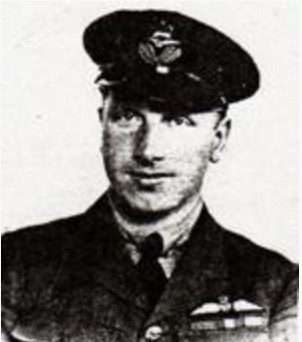
John Alcock was born on November 6, 1892, (some sources suggest November 5) in Basford, Nottingham, England. He attended Heyhouses School in Lytham St. Annes. At age 17, John was employed at the Empress Motor Works in Manchester as an assistant to Works Manager Charles Fletcher, an early Manchester aviator and Norman Crossland, a motor engineer and founder of Manchester Aero Club. Alcock’s interest in aviation was ignited by this association. Around this time, Alcock met Maurice Ducrocq who was both a demonstration pilot and UK sales representative for aero engines made by the Italian Company Spirito Mario Viale.
Ducrocq hired Alcock on as a mechanic at the Brooklands aerodrome, in Surrey, where John enrolled in flying lessons at Ducrocq’s flying school. After earning his pilot’s licence in November 1912, Alcock began competing in air races, and in 1914, he competed in a Hendon-Birmingham-Manchester and return air race, flying a Farman biplane.
At the outbreak of World War I, Alcock joined the Royal Naval Air Service at the rank of as a warrant-officer serving as a flying instructor at the Royal Naval Flying School in Kent. By 1915, at the age of 23, Alcock had received his commission as a flight sub-lieutenant and the following year was transferred to a squadron on the Greek island of Lemnos. It was there that he designed the Alcock Scout, a fighter aircraft constructed from the bits and pieces of abandoned planes.
On September 30, 1917, Alcock flying a Sopwith Camel aircraft, attacked three German planes, forcing two of them to crash into the sea. This earned him the Distinguished Service Cross. After returning to base, he flew a Handley Page bomber destined for Constantinople where he was to conduct a strategic bombing raid. However, as he approached Gallipoli, one of his engines failed and he had to return to base. When the remaining engine failed on the return trip, Alcock and his two crew members had to ditch the bomber into the sea. As Alcock and his crew clung to the floating aircraft they attempted, without success, to attract the attention of British destroyers that were in view. When the aircraft began to sink, the three castaways swan for an hour, finally reaching the Turkish shore where they were captured and held prisoner. Alcock spent the rest of the war in a prison camp until the Armistice was declared, and in March 1919, he retired from the Royal Air Force.
After leaving the Royal Air Force, Alcock found employment as a test pilot for Vickers Ltd. On June 15, 1919, John Alcock along with his navigator, Arthur Whitten Brown, completed the first non-stop flight across the Atlantic Ocean. They flew from St. John’s, Newfoundland, Canada, to Clifden, Ireland in a modified Vickers Vimy bomber. During the 16-hour- and-12 minute flight, they encountered numerous challenges, including dense fog, iced-wings, and strong winds.
This remarkable achievement made Alcock and Brown international heroes and paved the way for future long-distance flights, including Charles Lindbergh’s first solo transatlantic flight in 1927. They were awarded the Daily Mail prize of £10,000 in recognition of their historic achievement. Both John Alcock and Arthur Whitten Brown were knighted by King George V, becoming the first British pilots to receive this honor.
Unfortunately, Sir John Alcock’s aviation career was short-lived. On December 18, 1919, just a few months after their transatlantic flight, he and his mechanic were killed while participating in an aviation race from London to Australia. Their aircraft crashed in bad weather near Rouen, France. Sir John Alcock’s groundbreaking transatlantic flight remains a milestone in the history of aviation, demonstrating that intercontinental air travel was attainable.
